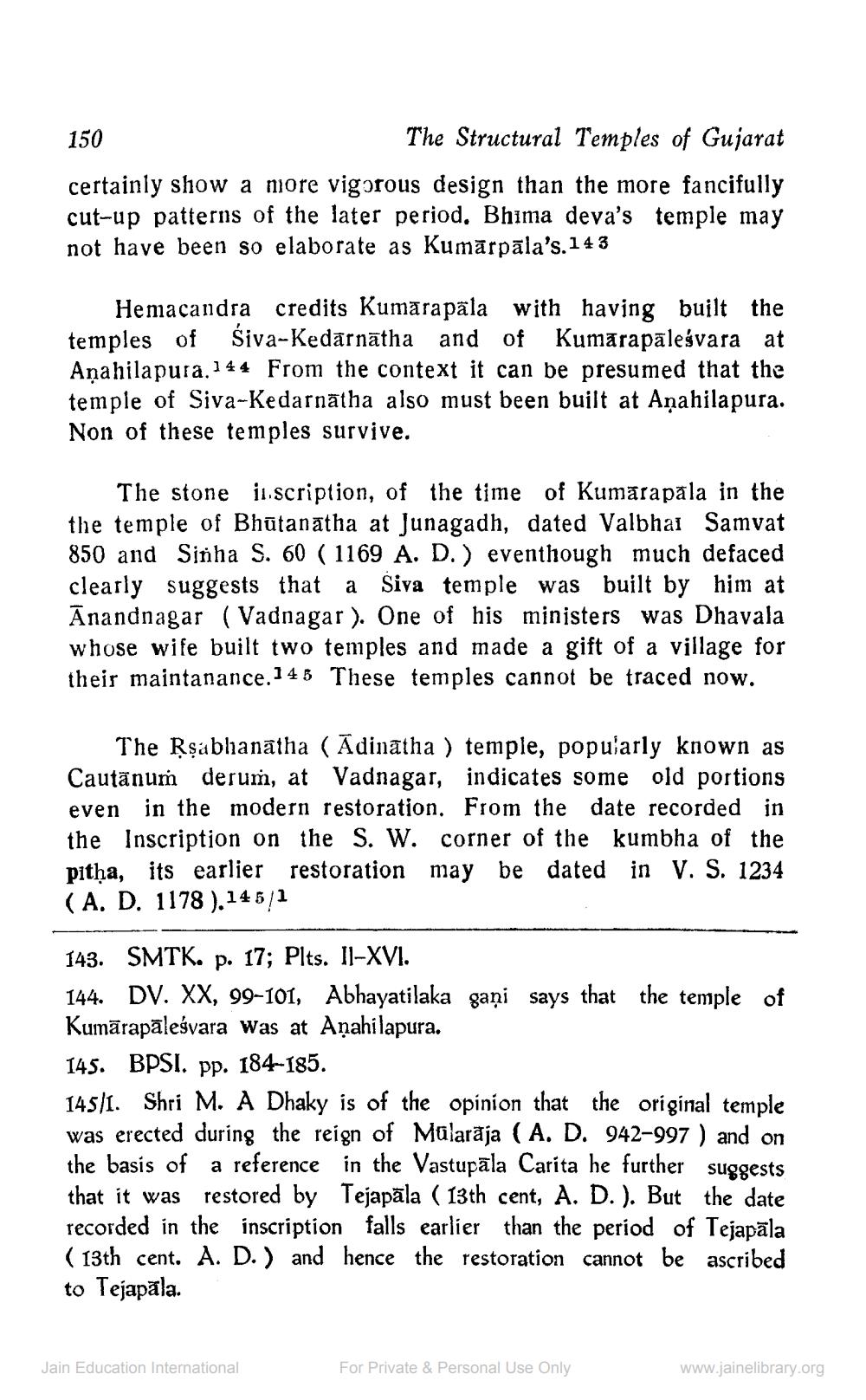________________
150
The Structural Temples of Gujarat
certainly show a more vigorous design than the more fancifully cut-up patterns of the later period. Bhima deva's temple may not have been so elaborate as Kumārpāla's. 143
Hemacandra credits Kumarapala with having built the temples of Śiva-Kedarnatha and of Kumarapaleśvara at Aṇahilapura. 144 From the context it can be presumed that the temple of Siva-Kedarnatha also must been built at Anahilapura. Non of these temples survive.
The stone inscription, of the time of Kumarapala in the the temple of Bhutanatha at Junagadh, dated Valbhai Samvat 850 and Sinha S. 60 (1169 A. D.) eventhough much defaced clearly suggests that a Siva temple was built by him at Anandnagar (Vadnagar). One of his ministers was Dhavala whose wife built two temples and made a gift of a village for their maintanance.145 These temples cannot be traced now.
The Rṣabhanatha (Adinatha) temple, popularly known as Cautanum derum, at Vadnagar, indicates some old portions even in the modern restoration. From the date recorded in the Inscription on the S. W. corner of the kumbha of the pitha, its earlier restoration may be dated in V. S. 1234 (A. D. 1178).145/1
143. SMTK. p. 17; Plts. Il-XVI.
144. DV. XX, 99-101, Abhayatilaka gani says that the temple of Kumarapaleśvara was at Anahilapura.
145. BPSI. pp. 184-185.
145/1. Shri M. A Dhaky is of the opinion that the original temple was erected during the reign of Mularāja (A. D. 942-997) and on the basis of a reference in the Vastupala Carita he further suggests that it was restored by Tejapala (13th cent, A. D.). But the date recorded in the inscription falls earlier than the period of Tejapāla (13th cent. A. D.) and hence the restoration cannot be ascribed to Tejapala.
Jain Education International
For Private & Personal Use Only
www.jainelibrary.org




